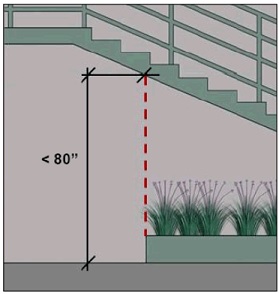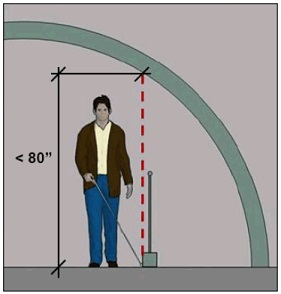Vertical Clearance [§307.4]
Headroom clearance of at least 80” high is required along all circulation paths (except at doors and doorways where a 78” minimum clearance is permitted to accommodate door stops and closers).
Fixed barriers, such as guardrails, are required where the vertical clearance is less than 80” such as at open stairways and along sloped or curved walls. Barriers must have leading edges no higher than 27” so that they are within cane sweep. Fixed planters, benches, and other elements can be used instead of guardrails.
Barriers at Circulation Areas with Reduced Vertical Clearance
Reduced Clearance Below Stairway
Clearance Reduced at Curved (or Sloped Walls)
Recommendation: A minimum height is not specified for barriers demarcating areas with less than 80” of vertical clearance. It is recommended that barriers be high enough so that they are not mistaken for a step or other change in level and do not pose a tripping hazard.




User Comments/Questions
Add Comment/Question